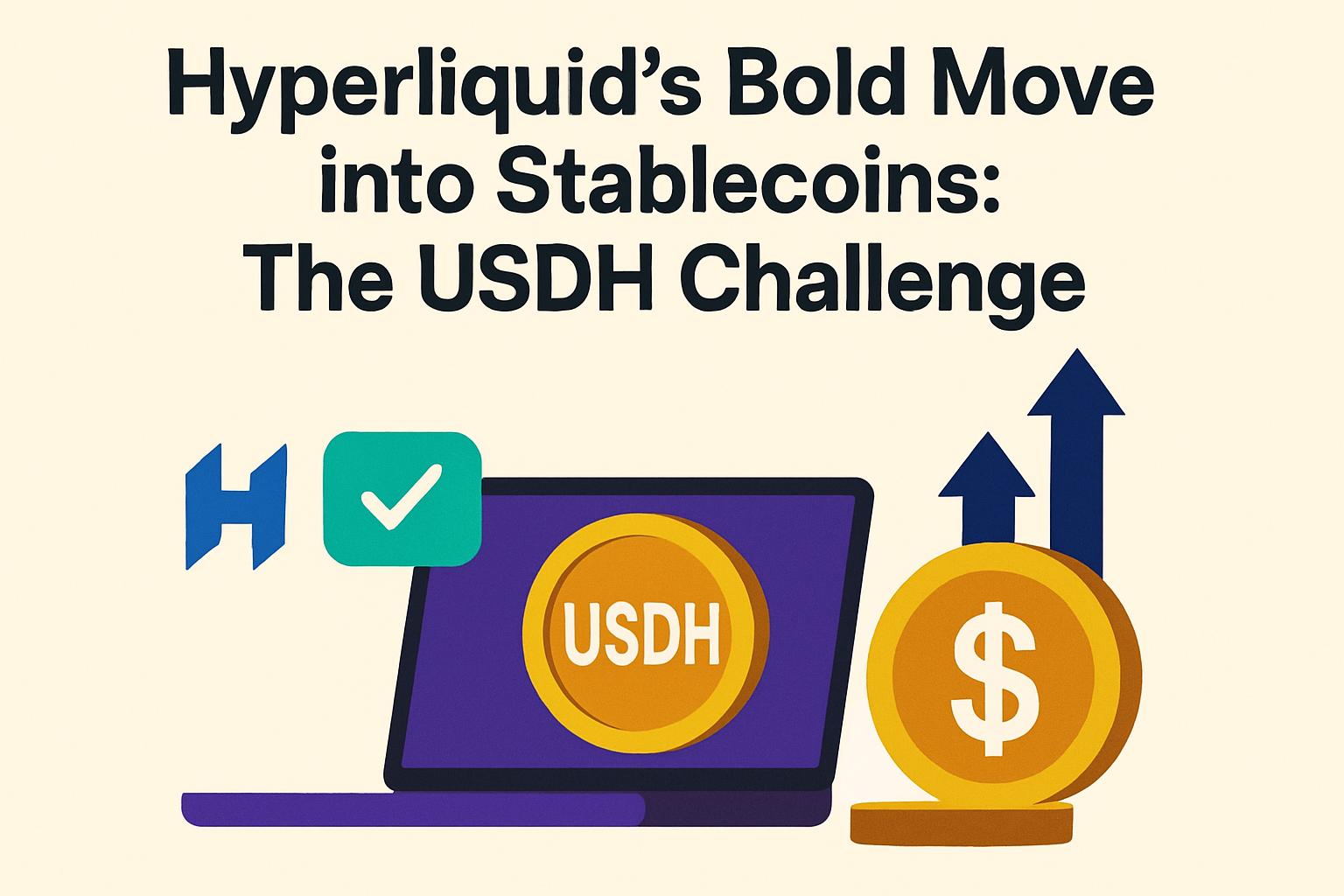The digital finance world stands on the brink of another tectonic shift with the latest announcement from Hyperliquid, the leading decentralized perpetual contract exchange. They’ve unveiled plans to launch their own stablecoin, USDH, marking a noteworthy venture beyond their robust trading platform. USDH is set to decrease Hyperliquid’s reliance on USDC, with the added advantage of capturing interest income from reserves. This ambitious move could expand influence within the DeFi space, as it creates new revenue pathways and fortifies market position.
Genesis of a Challenger: USDH’s Strategic Design
On the heels of achieving its highest trading volume, surpassing financial stalwart Robinhood, Hyperliquid announced through its Discord community the forthcoming digital asset, aiming to entrench itself within its own ecosystem while ensuring regulatory transparency. This announcement has sparked interest among leading players like Paxos, Frax Finance, Agora, and Ethena Labs, all eager to participate in the minting process through a competitive proposal system.
Hyperliquid is leveraging a decentralized governance model to select the USDH issuer from these contenders, with voting concluding shortly. This approach exemplifies a paradigm shift toward decentralized consensus in financial decisions, enriching the ecosystem with diverse inputs and strengthening community bonds.
Paxos: A Haven of Compliance and Distribution
Paxos steps into the ring with its hallmark compliance strength, backed by approvals from the New York Department of Financial Services. Their pitch promises adherence to regulatory frameworks across the U.S., EU, Singapore, and Abu Dhabi, while utilizing a broad spectrum of banking and financial channels globally. Paxos plans on channeling interest from reserves back to the Hyperliquid ecosystem, aiming to build a reciprocal, benefits-driven environment for stakeholders.
Frax Finance: Integration and Benefit Maximization
Frax Finance offers an alluring zero-profit sharing model, where all generated yields would bolster Hyperliquid’s financial landscape. Their proposal hinges on the existing frxUSD support, embedded into DeFi infrastructures. This symbiotic relationship may drive considerable appeal among DeFi enthusiasts, despite inherent risks linked to single-system dependencies.
Agora and Ethena Labs: Unique Strategies
Agora introduces an expansive alliance-driven infrastructure, prioritizing multi-chain deployment and real-world integration, backed by formidable partners like State Street and VanEck. Meanwhile, Ethena Labs plays the enigmatic card, intriguing the community with creative discourse instead of explicit mechanics, leaving room for speculation. Yet, perceived competition dynamics might throttle their acceptance.
Circle, a potential losing party if USDH thrives, does not shy away from subtle counteractions. CEO Jeremy Allaire’s enigmatic rhetoric underscores the ongoing competitive vibe, suggesting Circle’s readiness to navigate and possibly counter Hyperliquid’s audacious stride.
The Future Landscape
As the countdown to proposal submissions ends, speculation intensifies. The emergence of new players like MetaMask’s associated stablecoin mechanisms or Sky Protocol could redefine the playing field. Regardless of the victor in this stablecoin launch standoff, the movement towards innovative financial paths is undeniable. Hyperliquid’s strategic foresight cements its role as a catalyst reshaping digital finance.

![[News] Bitcoin at a Turning Point? 10x Research Signals a Bullish Macro Shift Ahead](https://cryptoexplores.com/wp-content/uploads/2025/06/new20250616.jpg)
![[News] Binance Lists $HOME, the Gas-Free, Bridge-Free All-in-One DeFi App](https://cryptoexplores.com/wp-content/uploads/2025/06/news20250617.jpg)